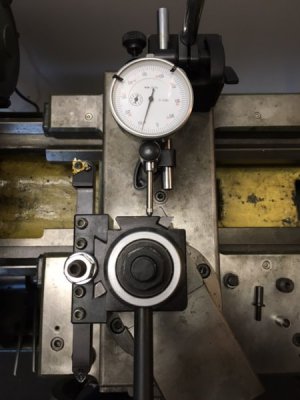I have an er32 collet nut in the mail arriving any day now. I have the barrel nut ready to have the nut threads cut. But it will need to be very accurate!
How would I go about accurately transferring that female thread to my male barrel nut? What's the preferred method?
Okay, I think I see where you're going here, Shawn. You have an ER-32 nut on the way and you need to know how to cut the mating male thread for it, right? You seem to be asking: 1) what dimensions to make the snout of the chuck so the nut will fit properly, 2) what the PD (pitch diameter) is and 3) how to measure the threads so you have a good fit (pitch diameter tolerances). Is that right?
An ER-32 nut has a M40-1.5 thread. The M40 part is the nominal major diameter and the 1.5 part is the pitch of the thread. Ideally, you would also have the tolerance the female thread is cut to and the maker can supply this info for you (unless its Chinese, so good luck).
1) To sort out what size to make the male blank, look here:
http://www.engineersedge.com/hardware/metric-external-thread-sizes2.htm. Scroll down to the M40-1.5 row and look for 4g/6g in the next column and you'll see the min/max dimensions for the external snout. You will also find the min/max Pitch Diameters for that class of thread.
2) When you say, "But it will need to be very accurate!" you are talking about tolerance class. Again, this relates to the 4g/6g thing above. A metric class 4g is equivalent to an American class 3a fit, which is a very precise thread used when strength requirements are high. It is a precision fit that requires precision dimensions and precision thread cutting. To get a handle on what this fit stuff means, go here:
http://www.katonet.com/article/science.html, and here:
http://www.bluetoad.com/article/Metric+Thread+Tolerances/1799736/0/article.html. This will explain what those numbers and letters mean.
3) To cut the thread accurately, you have to be able to measure the thread accurately and the guys have given you a number of options . A thread micrometer is the best way but is also the most expensive way. A 3-wire set is the cheapest but the most tedious. Your call but the Shars thread micrometer set can be had for less than $70.00 and seems like a good way to go because it can be used for every other threading project you do.
All this info is in the Machinery's Handbook, although it takes a bit of searching to find it. And don't even think that you're the first or only one to be confused by this thread cutting stuff because you aren't. Many of the guys who do understand it were right where you are now at some point so hang in there and learn. The thing I like about you, Shawn, is that you're willing to ask ... that counts in my book.
 )
)
